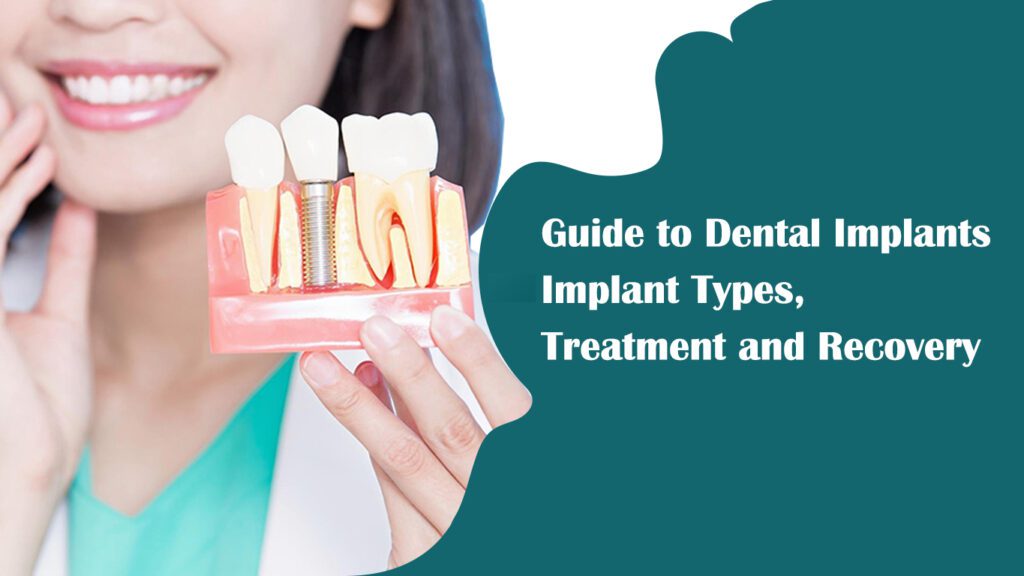Dental implants have become a popular and effective way to replace missing teeth and restore your smile. Getting dental implants can seem daunting, but with the right information, you can feel confident about the process. This guide will walk you through the different types of implants, what’s involved in the implant surgery, and what to expect during recovery.
What are Dental Implants?
Dental implants are artificial tooth roots made of titanium, surgically placed into the jawbone. They fuse with the bone through a process called osseointegration. Once fused, a prosthetic tooth is attached to the implant post that pokes out from the gums. The end result looks and functions like a natural tooth.
Implants not only replace lost teeth but also prevent bone loss in the jaw. Without a tooth root, the bone begins to deteriorate. Implants stimulate the jawbone, preventing bone loss and deterioration.
Types of Dental Implants
There are several types of dental implants to replace single or multiple missing teeth:
- Single Tooth Implant
This is one implant fused to the jawbone with an attached crown. It replaces a single missing tooth and is a simple approach.
- Implant Supported Bridges
This type is effective if you have two or more missing teeth. The bridge replaces several adjacent missing teeth and avoids loading the implants too heavily. It is most effective for patients who do not have enough jawbone to support the implant or if a nerve is nearby.
- Overdenture Implants
Implant overdentures can be a great option for those healthy enough for tooth extraction who want an alternative to traditional dentures. Overdentures are supported by dental implants, providing more stability than regular dentures. The potential benefits of overdentures are significant, including easier chewing, clearer speech, less discomfort, elimination of the need for messy denture adhesives, and often the ability to use your existing dentures. For many patients, implant overdentures strike an ideal balance between dentures and implants by improving the fit and comfort of dentures while avoiding extensive implant surgery.
- All-on-Four Implants
All-on-4 dental implants can be a great choice for adults seeking to avoid removable dentures. This treatment involves placing four small titanium implants per arch that will serve as artificial tooth roots. Once healed, abutments are connected to the implants, followed by life-like artificial teeth secured to these abutments. The final bridge of replacement teeth looks, functions, and feels much like strong, natural teeth. This technique provides a fixed solution while requiring fewer implants than more traditional approaches. For many patients, All-on-4 implants represent an appealing and stable alternative to troublesome dentures.
The Dental Implant Procedure
The implant surgery is done by an oral surgeon or specialist. It is usually done under local anaesthesia to avoid pain and discomfort. The steps in the surgical process include:
- Examination – Models and x-rays are taken of the jawbone to select the proper implant size and design. The bone is examined to ensure sufficient density and volume for the implant.
- Incision and Placement – An incision is made in the gums, and a hole is drilled into the jawbone. The implant is placed into the hole, positioning it flush with the bone. The gums are closed with sutures.
- Bone Growth – The implant integrates with the bone through osseointegration, which typically takes 3-6 months. The gums are given time to heal during this period.
- Attachment of Crown – Once fused to the bone, the implant can support a crown, bridge denture, or replacement teeth. Your dentist will take impressions to custom fabricate the restoration.
- Restoration Placement – The realistic-looking porcelain crown, bridge, or denture is designed, crafted, and securely attached to the implant post.
Recovery Time and Process
Implant surgery is generally an outpatient procedure with mild post-operative symptoms and a short recovery time. Typical recovery includes:
- First Week – Swelling, bruising, and minor pain are normal. Use ice packs to control swelling. Pain medication is prescribed as needed. Eat soft foods for a few days.
- First 2 Weeks – Sutures dissolve in 7-10 days. Antibiotics are taken to prevent infection. Oral hygiene is vital during recovery to avoid bacteria buildup.
- First 6 Weeks – Discomfort and swelling subside within a few weeks. The dentist monitors healing and may recommend a temporary restoration until the implant integrates.
- First 3-6 Months – The implant fuses completely to the bone. For full recovery, avoid hard foods or heavy chewing during the integration period. Regular dental visits are needed to monitor osseointegration.
- After 6 Months – The implant can now have a crown or replacement teeth attached. Your dentist will take impressions and design your permanent restoration.
Bottom Line
While a significant investment, dental implants greatly benefit oral health and quality of life. With careful planning, research, and using available discounts, implants can be an affordable option. Contact our dentist at Bayswater Dentist to determine if you are a candidate for dental implants. With the right information and preparation, you can move forward confidently with dental implant treatment.

